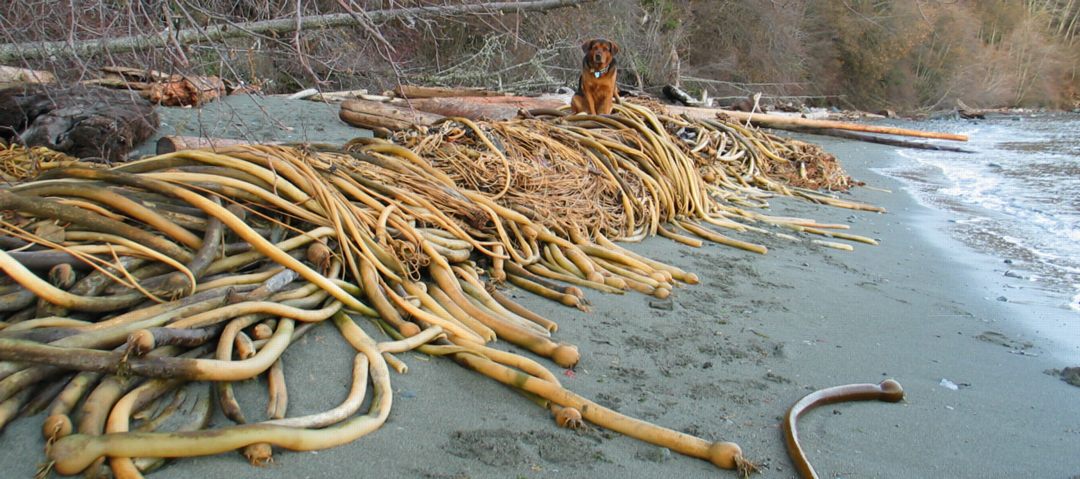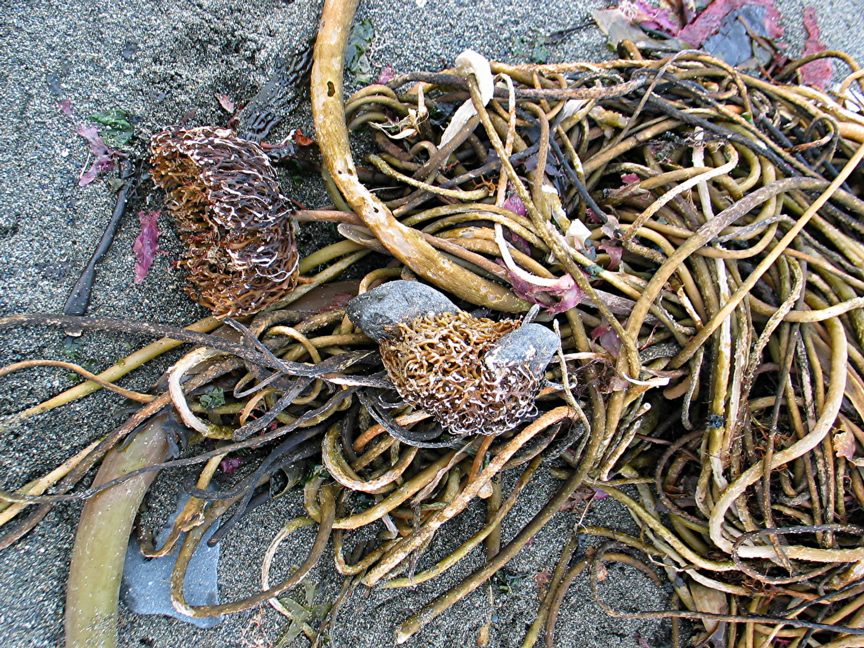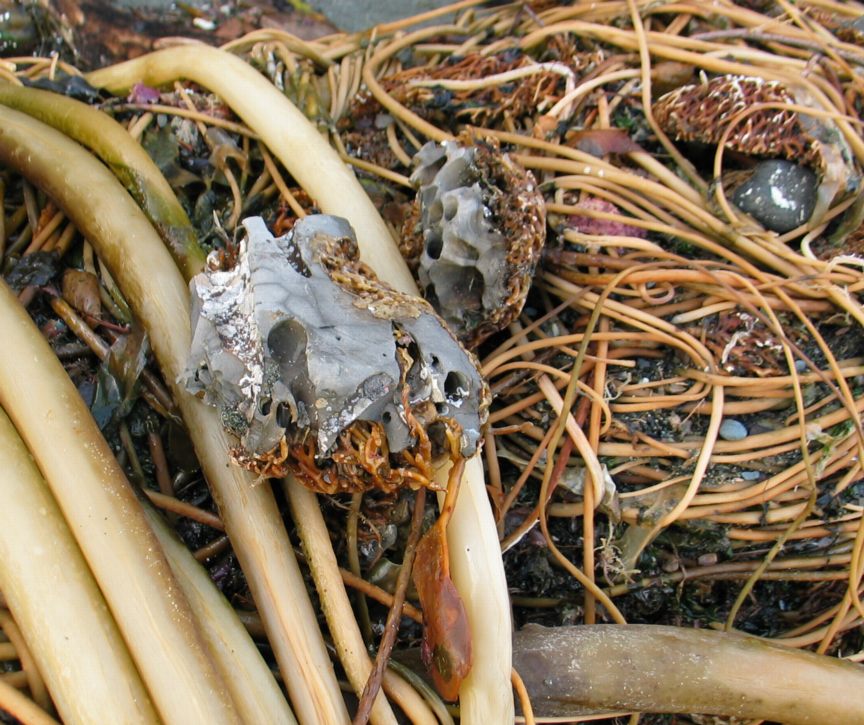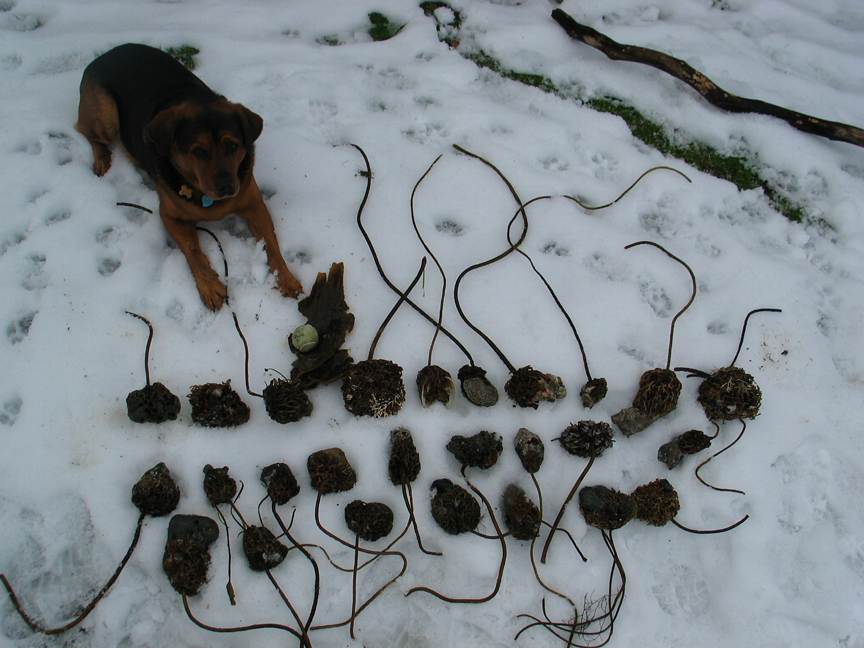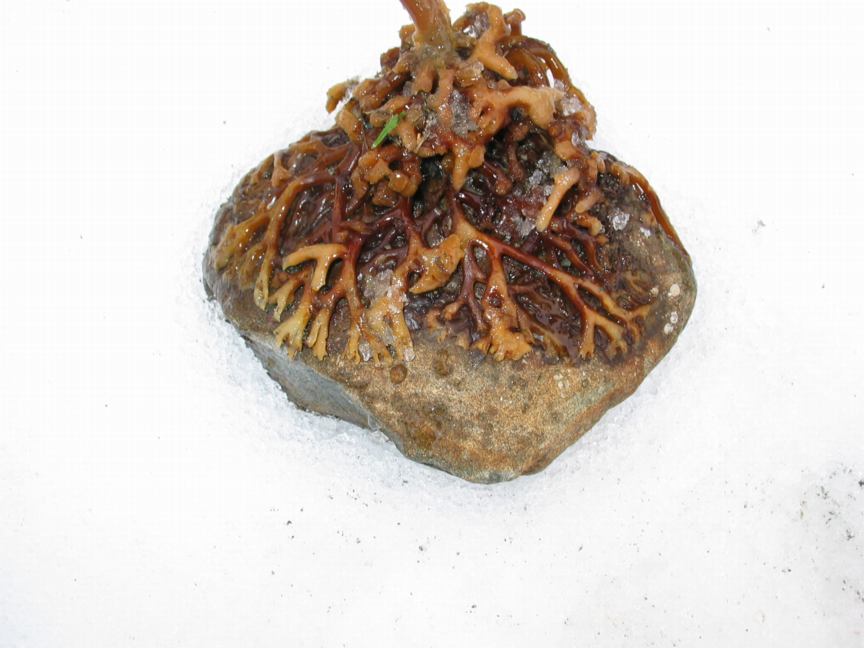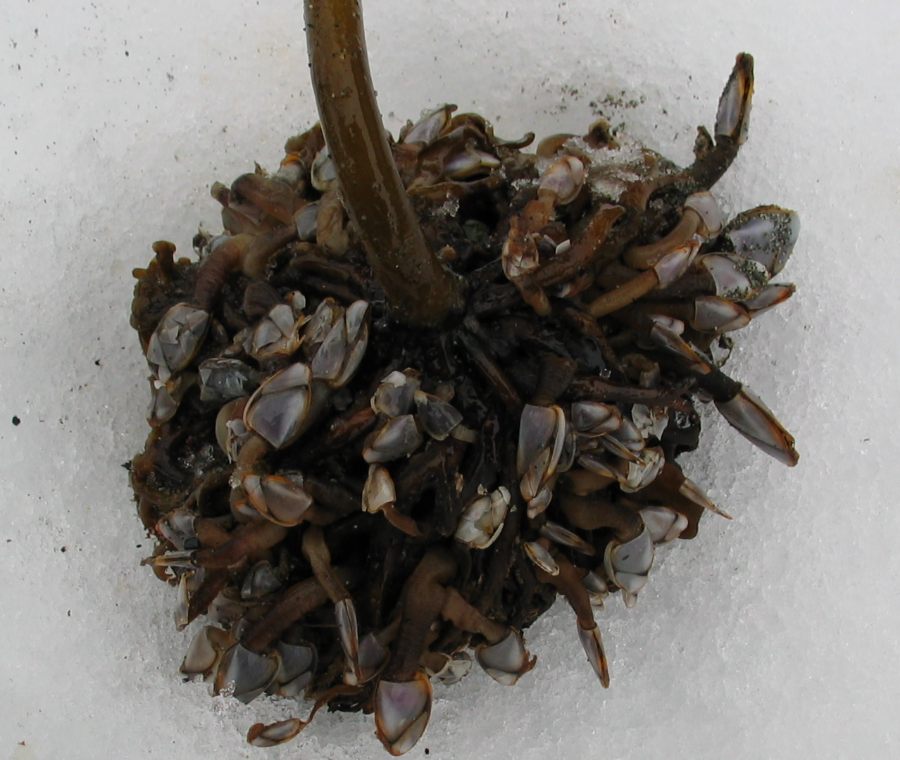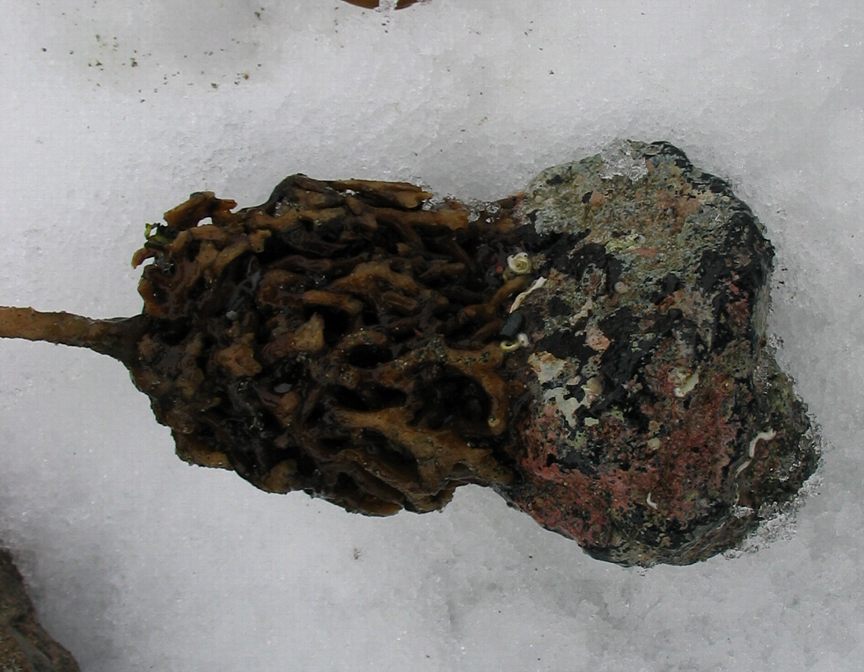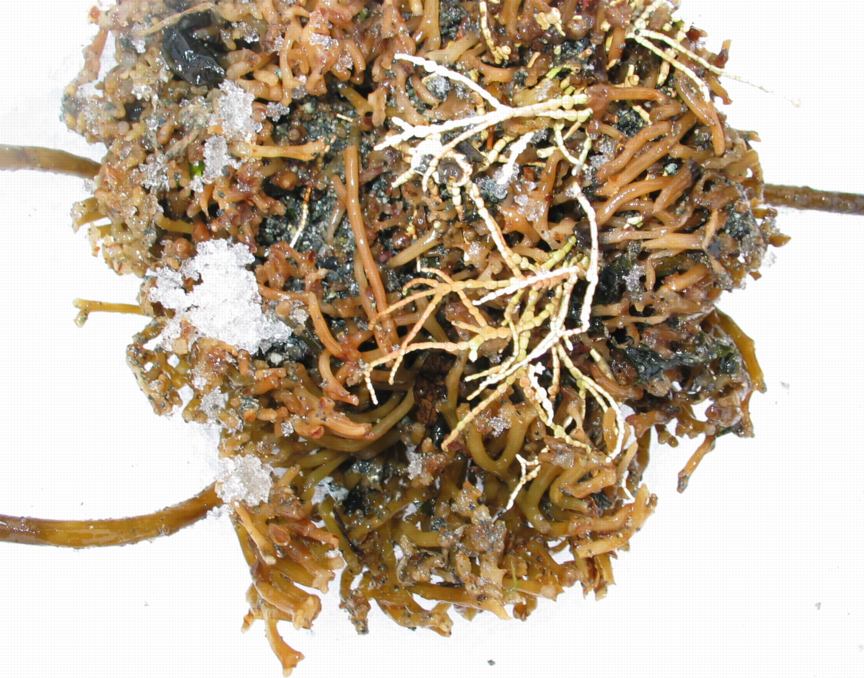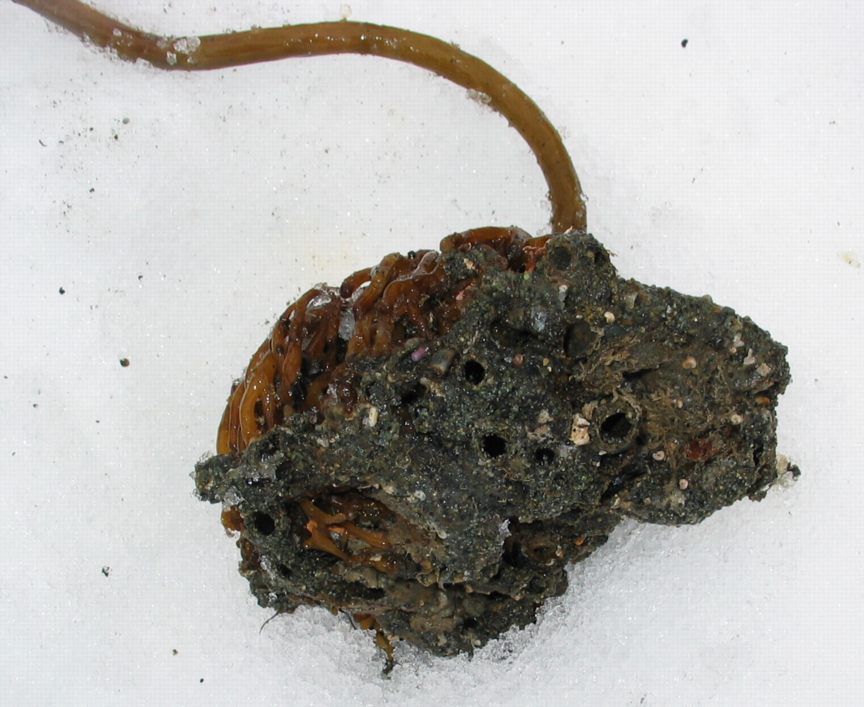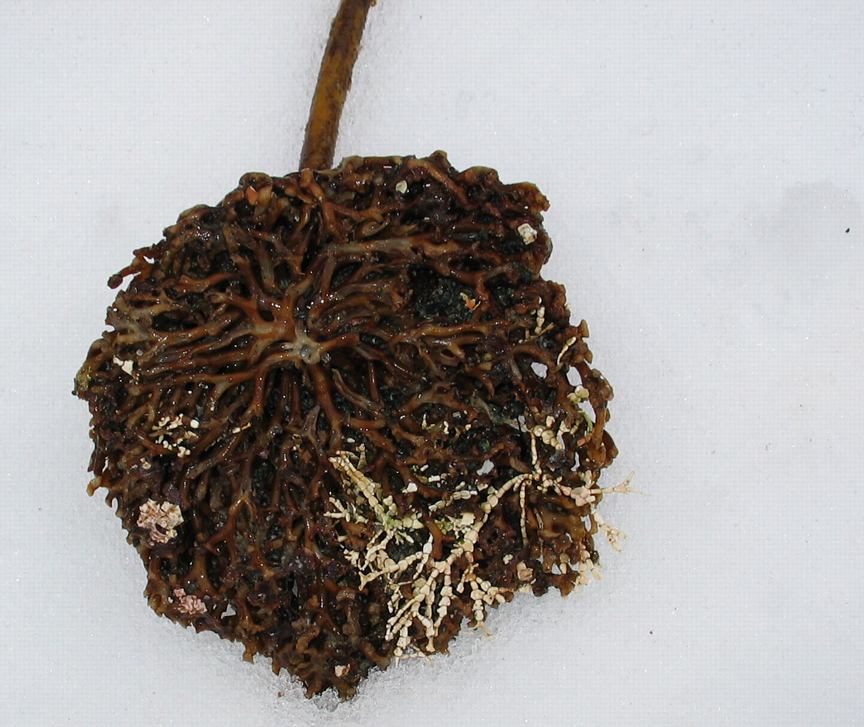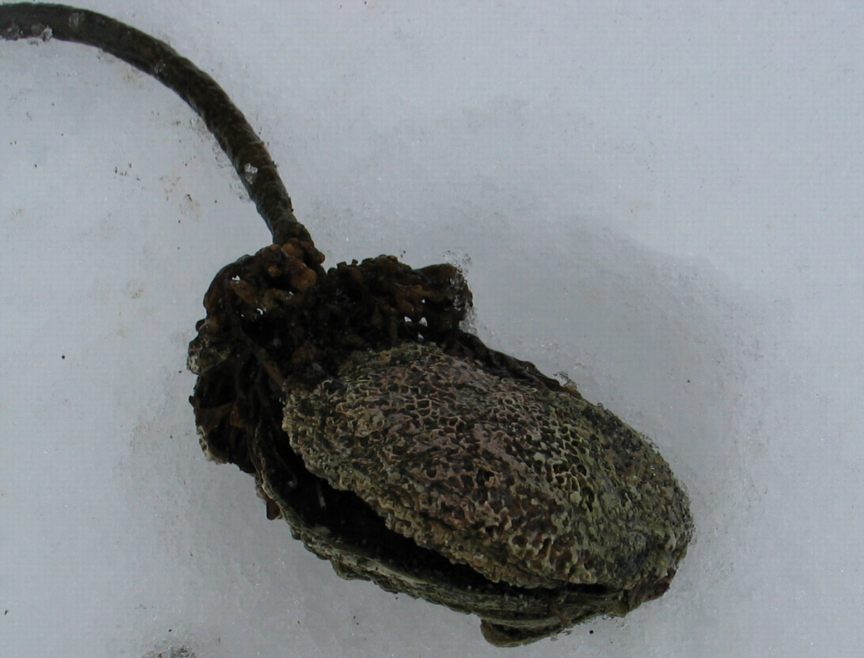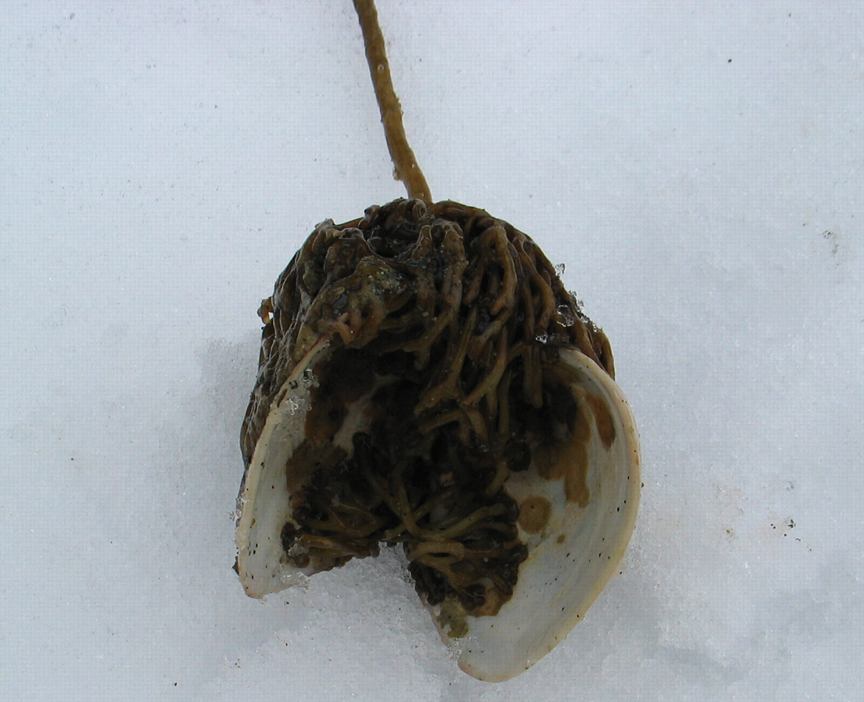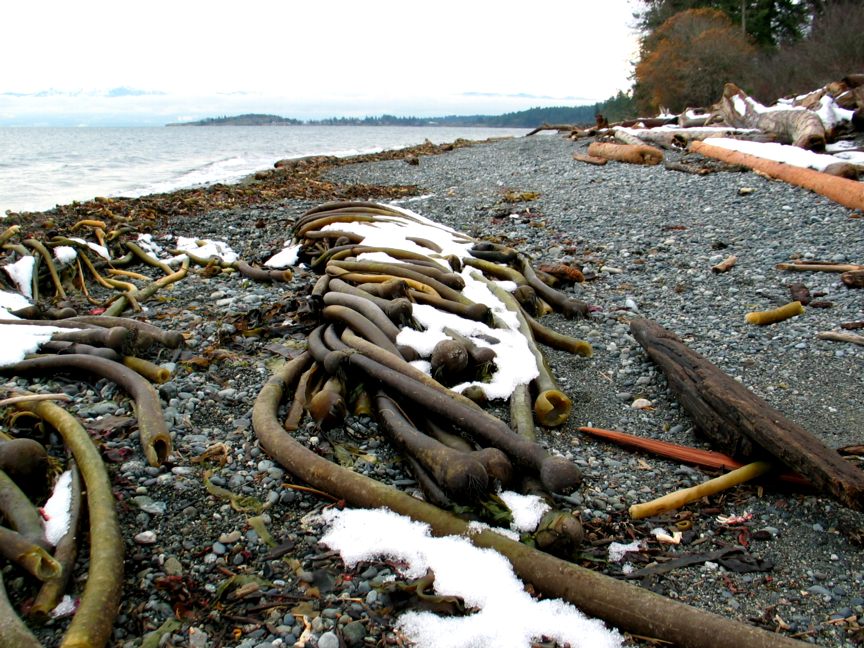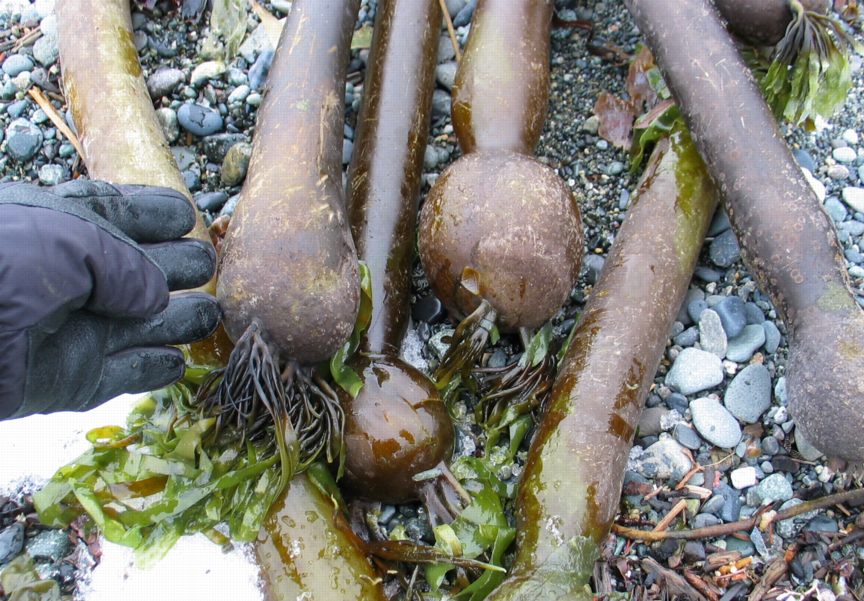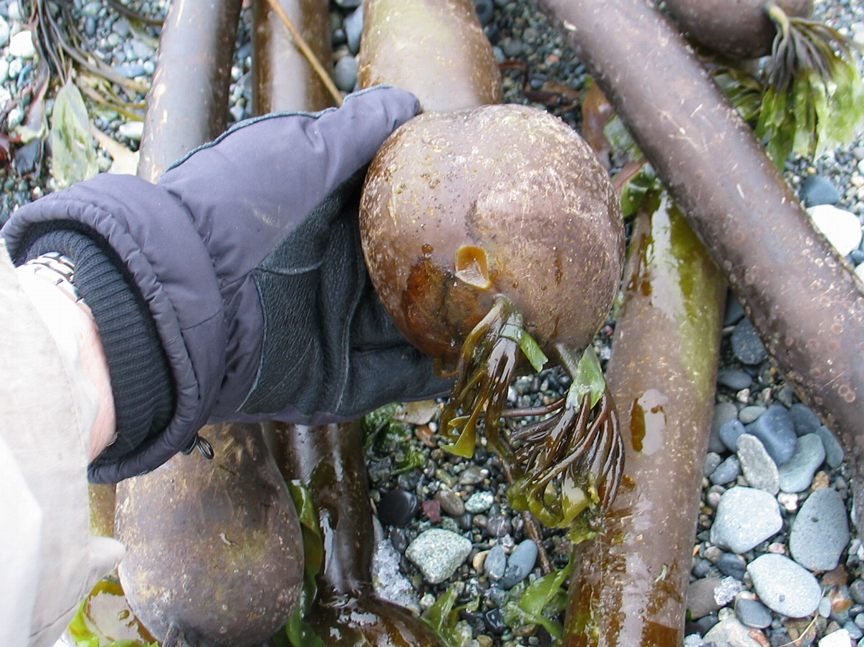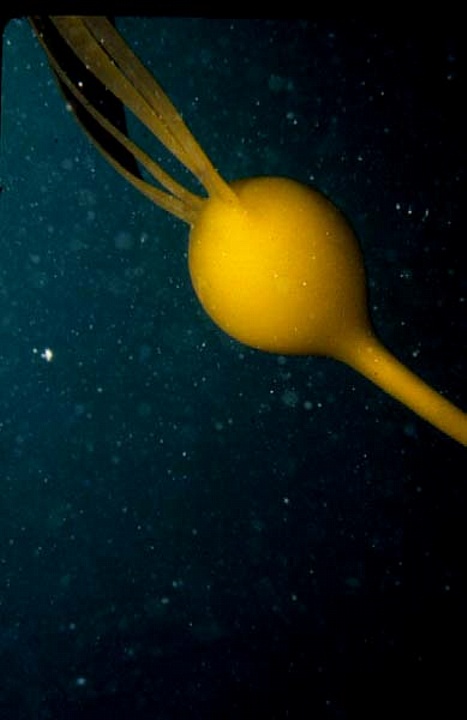Organisms are often involved in modifying the environment. The images in this file were taken in December 2006 after a strong north east wind pounded the lower end of Vancouver Island with the result that many Nereocystis ended up on local beaches near Race Rocks. Their stipes, lamina and holdfasts formed long twisted drifts of kelp, some of which would later decompose, adding to the energy flow from the marine ecosystem. Moreover, the presence of many kinds of materials carried along by the holdfasts provide an interesting insight into what contributes to accretion or buildup of materials along a coastline. (Che waits patiently while is master picks up seaweed!)
asa
- The biomass from subtidal ecosystems in areas located far away end up as input into the energy flow of beaches and other intertidal ecosystems
- located far away end up as input into the energy flow of beaches and other intertidal ecosystems.. In the tangled masses of kelp stipes and holdfasts many rocks showed up after one storm
- A few minutes of collection and arrangement of the holdfasts shows the variety of materials brought onto the shore in this one storm.
- Rocks weighing up to a kilogram were part of the debris, now part of the beach.
- Pelagic goose neck barnacles on this holdfast indicates it has probably been floating for several months. These barnacles only live on drift at sea.
- Small fist sized rocks are contributed to the shoreline
- Three holdfasts have been detached from their substrate. On the underside we can see a variety of organisms from coralline algae to bryozoans.
- Pelagic goose neck barnacles on this holdfast indicates it has probably been floating for several months. These barnacles only live on drift at sea. The tubes of mud worms are carried to shore. Many different species regularly inhabit the crevices of the holdfasts of kelp, and now they have become casualties by being ripped up by the storm.
- Another holdfast which serves as a habitat for coralline algae which appears white when dead.
- A rock scallop, normally rigidly attached to a rock, has also been ripped free and carried to shore by the buoyant kelp, to become part of the calcium carbonate deposits on the shore.
- Here a clam shell had been used as a substrate for the holdfast of the kelp. Now it lies deposited on the shore
- There were also a few clumps with Macrocystis holdfasts. Here the two species of kelp are compared.
- The underside of this large sandstone was colonized by the white tubes of calcareous serpulid worms, and fan-shaped bryozoans among other species of algae and invertebrates.
- The “strand line” along the shore contributes a large volume of biomass to the beach ecosystem. This is the appearance on Taylor beach, Race Rocks is hidden behind William Head, the peninsula shown here on the left horizon.
- These pneumatocysts, when still attached by their stipes in the ocean, have wide lamina streaming from the small tabs on the upper surface.
- The gas-containing floats and the hollow stipes of the kelp provide the buoyancy for the kelp bodies as they drift to shore
Go to the taxonomy file on Bull kelp, Nereocystis leutkeana

